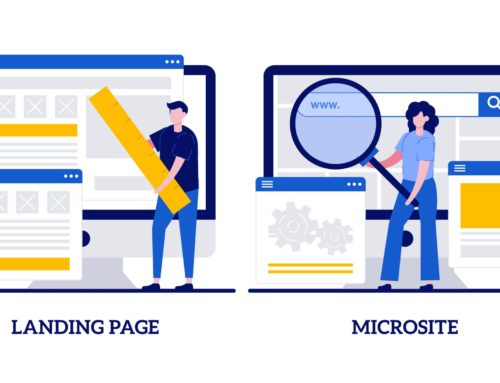As their very own name announces it, the key thing about microsites is, in fact, their tendency to remain “micro” — but how micro should they really be?
Recently, we’ve talked about the difference between microsites and landing pages, so let’s now talk about what happens when you’ve already decided that, because of your functionality and branding needs, a microsite is the strategy to go for. But now that you’ve decided that you definitely want to build a brand new (smaller) site for this new project or section that you want to pay more attention to, you need to figure out what’s the right amount of dedication you want to invest in it. And that will definitely depend on the amount of functionality that you’ll need it to have — so let’s jump right in and find out how to figure that one out, shall we?
So let’s go through some of the verticals and aspects you should consider before jumping right into the building of your microsite, and some of the questions you should ask yourself.
The realness factor
Since the very beginning, we’ve talked about building microsites for marketing purposes and whether or not that is something useful for your company’s strategy. And the thing is, and we are not here to judge morals or honesty, creating microsites with a random excuse but actually for marketing reasons is a very common and a very successful strategy these days. However, when we face the question of “how much functionality does it need to have?”, we might feel a bit confused because, well, what’s the right amount of functionality for my fake site?
Luckily, for you, the answer is super simple: just enough so it looks real, but not so much that it’s just not worth having it at all. A couple of pages, a couple of buttons, a couple of sections, and not a lot more than that will definitely be enough.
Your microsite’s purpose
If you’ve figured this will actually be a real microsite with a real purpose and reason to exist, then before you probably decided what that reason should be, aka, what will you be creating a microsite for. And obviously, the main theme of your new microsite will be a key factor when figuring the amount of functionality that it’ll need, depending on how simple or complex that reason is. So, for example, if you are planning on building a microsite to use it as your blog, then you won’t need a lot of functionality, and just a front page, blog page (with posts), and maybe contact page will be enough. If instead, you are planning on building, for example, a microsite for your users to have a community, then you’ll probably need some more pages, a forum, private chats, maybe profiles, among some other functionality.
How deep are you planning to go?
Even when, in general, a microsite’s purpose can help you determine how much functionality it’ll need, you can never escape the fact that it’s all relative, no matter how much we want to escape subjectivism. So maybe you want a huge blog with tests and categories and contests and a magazine and a whole bunch of things that will, obviously, require a lot of functionality. Or maybe you want your community to be a super simple, maybe even anonymous forum, where there’s nothing other than a place for people to add comments, and that will probably not require that much functionality. So, besides figuring out what it is that you want for your microsite, you should also figure out how much of it you want.
The time vertical
Another very important factor to consider, maybe one of the most important ones, is whether or not your microsite building is under a deadline. If this is a time-sensitive matter, then you should probably try to reduce as much as possible the functionality in order to launch as fast as possible, and with as few complications as possible. And of course, you can always continue adding functionality as time goes by, as long as you have everything ready by the time you should have it.
Budget
And finally, our biggest complication, and sometimes even enemy: how tight our budget is. If we have a lot to invest in it (whether because it’s super important, or for whatever the reason) then we can play around and have some fun with our new microsite’s personality, errr… I mean, functionality. Anyway, remember a microsite will represent what users will see and think about your company, business and project, so maybe avoid being too cheap, in order to not damage your company’s broad strategy. Of course, the good thing about microsites, is that they allow you to create sites cheaper and quicker, so for not a lot of money you can always create something good enough, and maybe even awesome.
So to conclude, I believe it’s super important to understand that there’s no rule of thumb when it comes to microsites functionality. It depends on your needs, strategy, time, budget, and really on your will to do it. So if you feel up for the challenge, then you can definitely take advantage of a strategy like this, but if you don’t, remember a really “micro” microsite can also be great, and can also help your company a lot.






Mora is a PPC Analyst at Hellbent Digital at work, and a theater nerd when not at work. And it turns out understanding theater—that is, how to put on compelling live shows that engage the audience—is a very useful skill for understanding digital marketing.